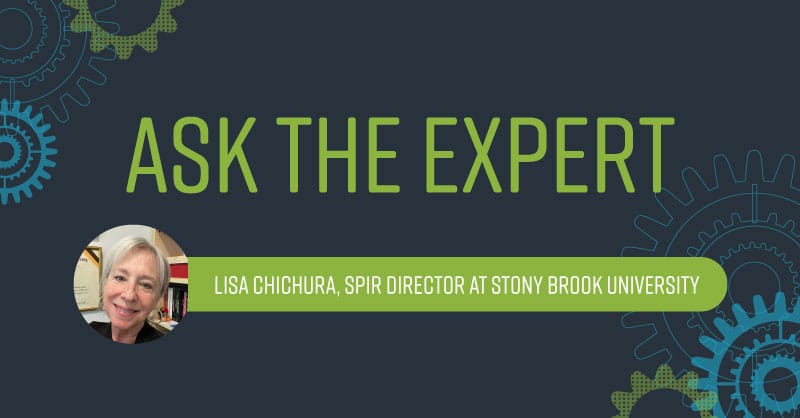For this edition of Ask the Expert, we spoke with Lisa Chichura, Ph.D., Director of the Strategic Partnership for Industrial Resurgence (SPIR) at Stony Brook University. Although she has held this title since March 2022, Chichura has spent the past 23 years helping Long Island businesses connect to the engineering resources available at Stony Brook and beyond.
Please introduce us to SPIR.
The mission of the Strategic Partnership for Industrial Resurgence (SPIR, pronounced spur) is to make the engineering resources of the four State University of New York engineering programs—at Albany, Binghamton, Buffalo, and Stony Brook—available to industry. We help companies solve engineering and technical problems to create and retain jobs in the high-tech workforce.
We are funded by SUNY and started in 1994 with the idea of assisting defense suppliers during the downturn in that industry. That mission evolved as the high-tech industry changed, and we currently provide engineering and technology problem-solving. Over the years, each of the SPIR programs has developed in tandem with the technology companies in its region.
What distinguishes the Stony Brook SPIR?
We have a very robust economic development program here at Stony Brook. We have two Centers of Excellence, one in wireless technology and one in energy, and two Centers for Advanced Technology, one in biotech and one in electrical systems. We also have several state tax incentive programs, including START–UP NY and an Innovation Hot Spot. We have an incubator space. We also have a lot of specialized research facilities and labs that we make available to companies. All of our programs work together to support companies in the region.
What types of companies does SPIR help most often?
We help engineering and technology companies, start-ups, and incubator companies, as well as older more established companies that may be “stuck” by introducing them to new opportunities, new ideas, and new perspectives.
What is your background?
I received my BA in physics and mathematics from Smith College and went on to pursue a doctorate in high energy physics from Johns Hopkins. Initially, after graduation, I worked in the private sector, first for an engineering consulting firm and then for a military test house that was transitioning to support commercial markets, specifically the automotive industry. I knew some of the Stony Brook professors through networking events and I happened to see the posting for an SPIR coordinator in Electrical and Computer Engineering. It seemed like it would be both interesting and a good fit. That was 23 years ago. I became SPIR’s Director in March after many years as Associate Director.
It’s been a very rewarding career and I’ve enjoyed helping both the companies and the students. In my years here, I’ve worked on many different projects and initiatives, and I have participated in numerous multidisciplinary proposals and projects.
How has SPIR changed over the past two decades?
The SPIR program, itself, has not changed all that much, but our funding has remained flat, so we’ve had to get creative in how we help companies. The program has become more robust with more services and offerings at our fingertips through the growing Economic Development program at Stony Brook, so we are able to provide a broader range of support to a larger pool of companies. This includes helping companies engage in R&D, solve engineering and technical problems, get funding through SBIR, STTR, and other grant programs, find students to work on projects, and connect to state resources through our local MEP center.
We had a reorganization earlier this year and what we are trying to focus on is creating stronger, longer-term relationships with our companies, to be able to provide more comprehensive assistance.

